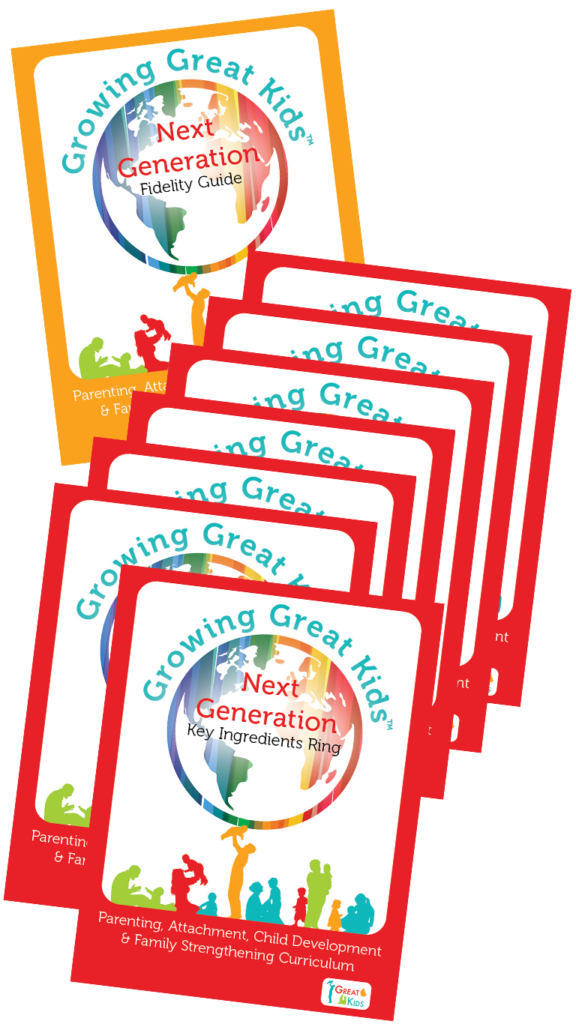In today’s blog, we will explore a topic of interest to all new parents – crying babies and how to console them. We know babies cry for different reasons, and most parents recognize that babies’ crying sounds different in different situations. Certainly, as parents, we experience many different feelings when we hear our babies cry. How normal is baby’s crying? Is there a difference between “normal” and “excessive” crying? What does the Period of PURPLE Crying mean? We will start our discussion with what experts have to say about these questions. Then, we will explore why comforting a baby might be more important than getting the crying to stop. Crying is the only way infants communicate their needs. When a baby feels that her/his needs are attended to in nurturing and loving ways, they start building secure attachment relationships. Lastly, we will discuss some of the relevant GGK tools to help parents support the development of secure attachment relationships during routine care and daily parent-child interactions.
Infants’ crying is viewed as a normal part of neurodevelopment. Fussing, crying, and inconsolable crying follows a typical curve that increases weekly, peaks during the sixth week postpartum at a stable duration of approximately 2 hours per day, and declines to below 1 hour per day by the 3rd or 4th month. Although crying may happen at any time of the day or night, it seems to have the propensity to occur in late afternoon or evening. Excessive or problematic crying is defined as crying behavior that occurs more than 3 hours a day, more than 3 days in any week, for at least 3 weeks, without any obvious cause. The unexplained reason of excessive baby crying is what concerns and stresses parents out. Unfortunately, excessive crying has been connected with Shaking Baby Syndrome, child abuse, parental distress, and depression, among many other negative health consequences for infants and parents (Akhnikh, et al. 2014).
In 2007, Dr. Ronald G. Barr in collaboration with Marilyn Barr developed the Period of PURPLE Crying. Dr. Barr is Professor of Pediatrics at the University of British Columbia. The Period of PURPLE Crying does not mean that the baby turns purple while crying but rather is the acronym to describe colic and excessive crying. The program is intended to help parents understand normal crying behavior, and what parents and babies go through when babies experience excessive crying and seem to resist soothing – which is a normal phase of every infant’s development (purplecrying.info, 2016).
According to Dr. Barr (2016), all babies go through the Period of PURPLE Crying; some babies cry a lot and some far less, but they all go through it (purplecrying.info, 2016). PURPLE stands for:
P: Peak of crying – Your baby may cry more each week; the most at two months, then less at 3 to 5 months.
U: Unexpected – Crying can come and go, and you don’t know why.
R: Resists soothing – Your baby may not stop crying no matter what you try to do.
P: Pain-like face – A crying baby may look like they are in pain, even when they are not.
L: Long-lasting – Crying can last as much as five hours a day, or more.
E: Evening – Your baby may cry more in the late afternoon and/or evening.
When babies come into this world, their only means of communicating their feelings and distresses is through crying. Thus, crying is a way of securing an empathic response from the parent/caregiver. When babies receive what they need, they feel loved and secure, and they learn that they can depend on their parent/caregiver. Parents’ capacity to respond in nurturing ways depends on their ability to feel empathy for what the baby is experiencing.
GGK has several tools to support parents to grow empathic parenting skills. Today, we will spotlight the Getting in Sync and E-Parenting Daily Do. Getting in Sync is an attachment tool designed to support parents to read their baby’s cues and signals. When parents are able to read cues and sync up emotionally with their babies, they respond in loving and supporting ways. The E-Parenting Daily Do is a strategy intended for parents to grow empathic parenting skills and self-regulation in children. Remember that the “E” in E-Parenting stands for Empathy – this Daily Do describes 3 steps for parents that are easy to put in practice every day within routine care and parent-child interactions. Basically, the Getting in Sync and E-Parenting Daily Do tools are inter-connected; they are both intended to enhance empathic parenting skills.
Managing infants’ excessive crying is not easy! Sometimes infant crying has no medical reason, and new parents are often tired and stressed. What babies need most during this phase is for parents to meet their pressing needs and if nothing seems to help… remaining calm and relaxed would probably be one of the best approaches. As a Home Visitor, helping parents identify their support systems (family, friends, neighbors, parent hotline, etc.) so they can reach out to them when needed, will be extremely important.
Parents will also greatly benefit from reassurance and support from you in growing empathic parenting skills. Remember when parents put Getting in Sync and E-Parenting into practice many times each day, they are helping their baby build secure attachment relationships- and this is much more important than getting the crying to stop.
Works Cited:
Akhnikh, S., M.D., Engelberts, Adèle C,M.D., PhD., van Sleuwen, Bregje E, PhD, L’Hoir, M. P., PhD, & Benninga, Marc A,M.D., PhD. (2014). The excessively crying infant: Etiology and treatment. Pediatric Annals, 43(4), e69-75. http://dx.doi.org/10.3928/00904481-20140325-07
The Period of PURPLE Crying 2016). What is the Period of Purple Crying? Retrieved from http://purplecrying.info/what-is-the-period-of-purple-crying.php

